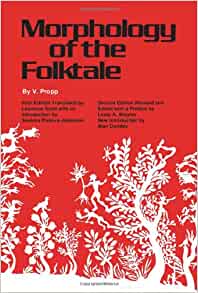Copyright 2020 by Gary L. Pullman
Many horror stories are
mysteries which typically follow a well-established format:
- An unknown monster is killing people.
- Often, as the killings continue, the protagonist, sometimes aided by friends or others, investigates; intelligence is gathered, clues are solved.
- The monster is identified; it is known.
- Knowledge about the monster is used to neutralize or eliminate it.
- The status quo returns.
This same formula can
apply to plagues:
- An unknown disease is killing people.
- Often, as the killings continue, the protagonist, sometimes aided by friends or others, investigates; intelligence is gathered, clues are solved.
- The pathogen is identified; it is known.
- Knowledge about the pathogen is used to neutralize or eliminate it.
- The status quo returns.
Of course, many a
detective story also follows this path:
- An unknown murderer is killing people.
- Often, as the killings continue, the protagonist, sometimes aided by friends or others, investigates; intelligence is gathered, clues are solved.
- The murderer is identified; it is known.
- Knowledge about the murderer is used to neutralize or eliminate him or her.
- The status quo returns.
Where does variation come
into play? The same variables that make the structure of fairy tales,
as this structure is defined by Vladimir Propp in Morphology of
the Folktale, makes the
particulars fresh and intriguing, despite the sameness of the
underlying formula's structure.
What
is the monster? How is he, she, or it different than others of his,
her, or its kind? Physically different? Emotionally different?
Behaviorally different? Volitionally different? What motivates it?
Whom
are the victims? Why are they targeted? How does the monster kill
them?
Where
do the killings occur? Why here and now, rather than elsewhere at
another time?
What
theme does the story suggest, and how does it do so?
A
dictionary definition can help us to answer the question, What is the
monster?
A
dictionary definition does two things: it classifies, or groups, and
it distinguishes, or differentiates. First, a dictionary definition
tells to which group the term being defined belongs. What type
of person, place, or thing is it? Then, a dictionary definition
explains how it differs from the other members of its group. The
group is the genus; the differences, the differentia.
Monster
(n.): an imaginary creature (genus) that is typically large, ugly,
and frightening (differentia).
In
what way is your
monster “large”? Height? Length? Weight? Strength? Intelligence?
Tall? Godzilla fills the bill. Long? What about the worms in Tremors?
Heavy? The Blob! Strong? There's a reason King Kong was king of the
jungle on Skull Island. Intelligent? The computer in Demon
Seed or, for that matter, the
extraterrestrial of Species
sure turned out to be to die for.
What
makes your monster
“ugly”? Appearance (but be specific)? Behavior? (but, again, be
specific)? Lack of emotion or twisted emotions? Other (specificity
counts, always!)? Although Michael Myers, of Halloween,
wasn't a bad-looking guy—some say he looks a lot like William
Shatner, in fact—his penchant for murdering randy teens and
sexually aroused young adults made him a lot less attractive, to be
sure.
Why
is your monster
frightening? It's hard to defeat, perhaps? It has amazing powers,
maybe? It is absolutely relentless, possibly? It is supernatural or
otherworldly? Other (specificity counts, always!)? The dinosaurs in
Jurassic Park, like
the alien in Alien,
had all these characteristics and more.
The
same process applies to other characters, such as the protagonist,
victims, experts, warriors or soldiers . . . . How do they differ
from everybody else's? What makes yours
unique? The expert in The Sixth Sense,
the psychiatrist, differs from his peers (or most of them, at any
rate) by his being dead.
A
setting should be integral to the story's plot, of course. If it is,
it can be used not only to frighten—it's a spooky place, after
all—but also to symbolize, to suggest, and to reveal, even as it
conceals. In The Descent,
for example, the caverns through which the female spelunkers spelunk may symbolize the female reproductive system itself; the
cave-creatures they encounter, their aborted fetuses. On the literal
level, the underground passages also add to the characters—and the
audience's—claustrophobia.
Plug
your own versions of
these characters and an appropriate setting of your own into the
horror-movie-as-a-mystery formula and you, too, can offer a new
wrinkle to the subgenre.








No comments:
Post a Comment